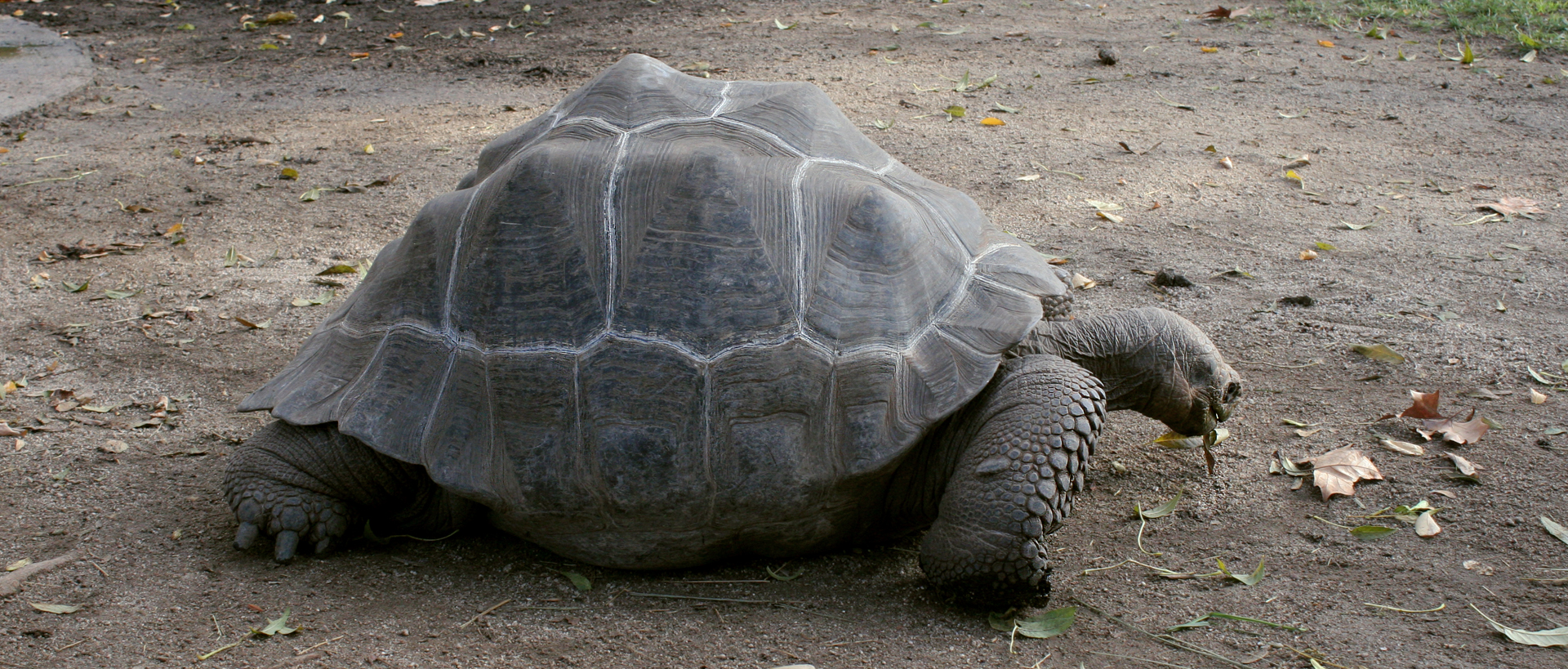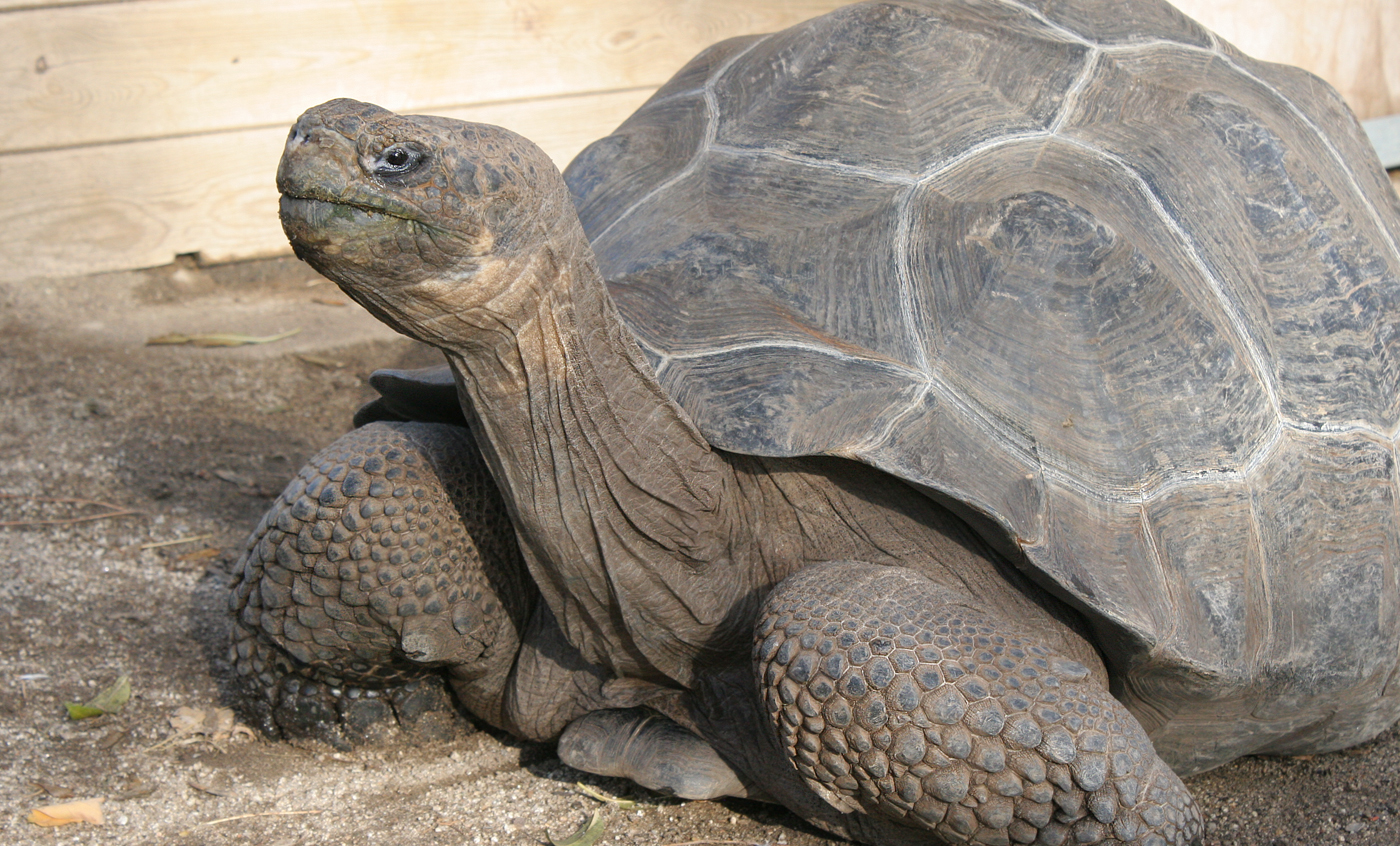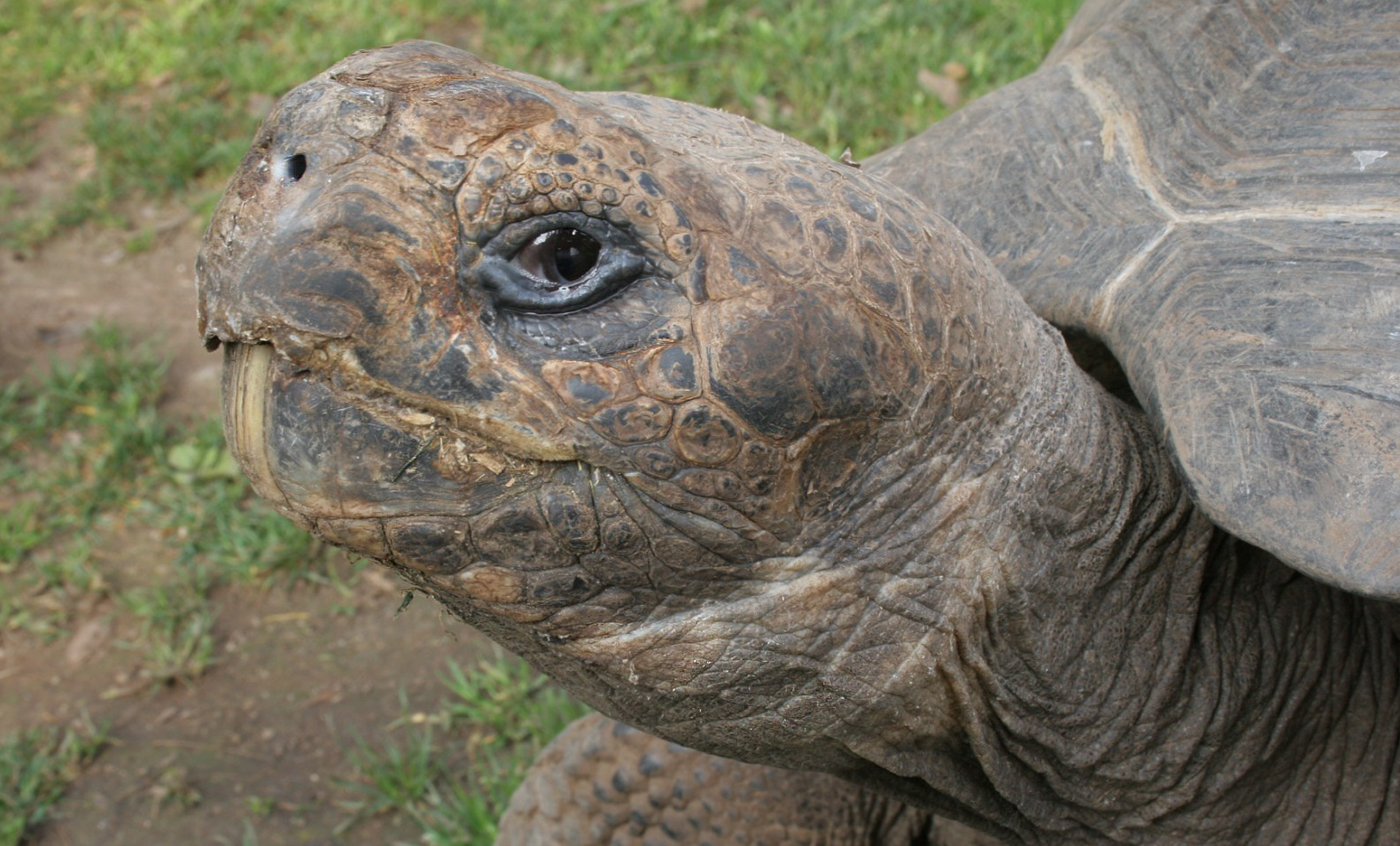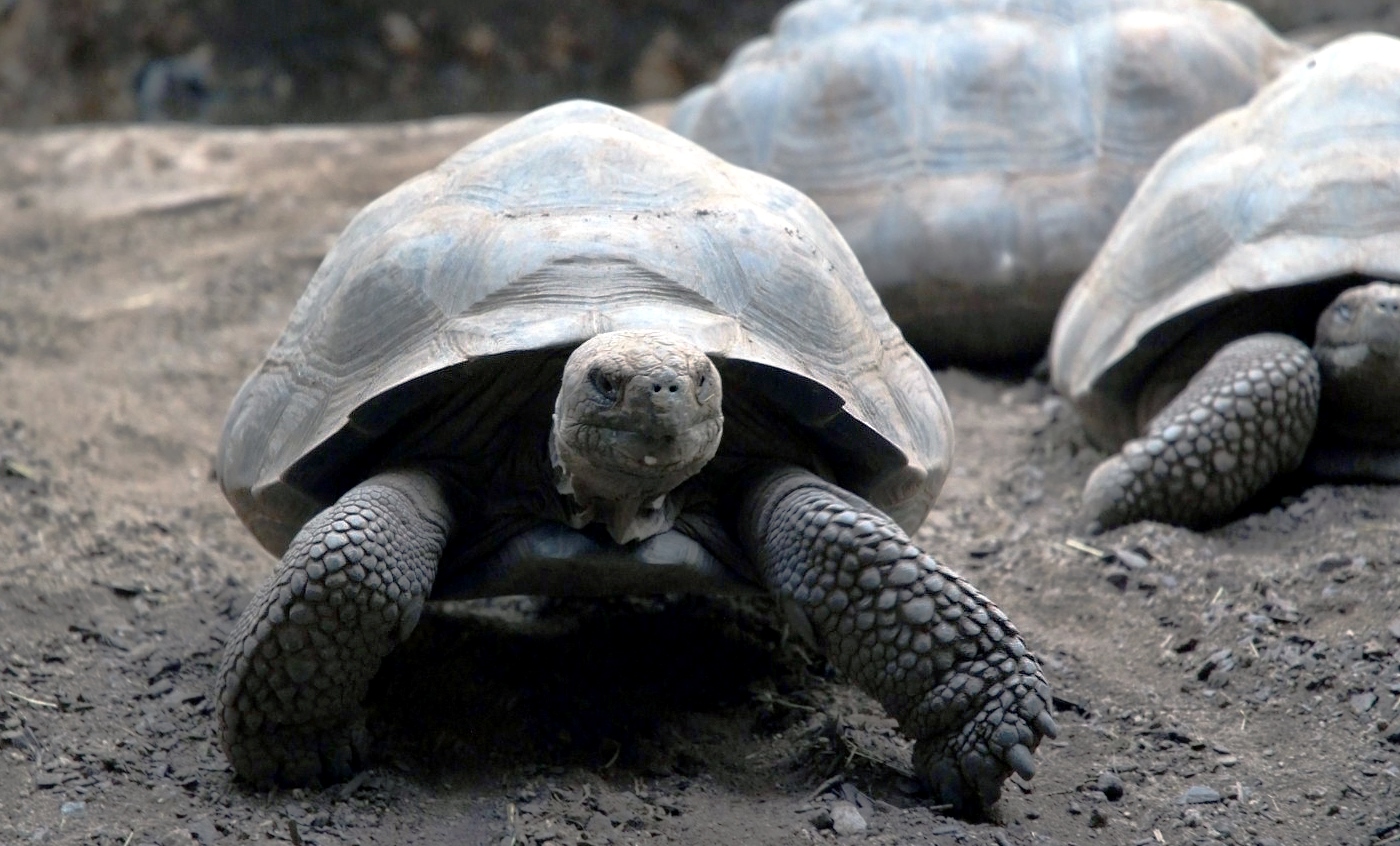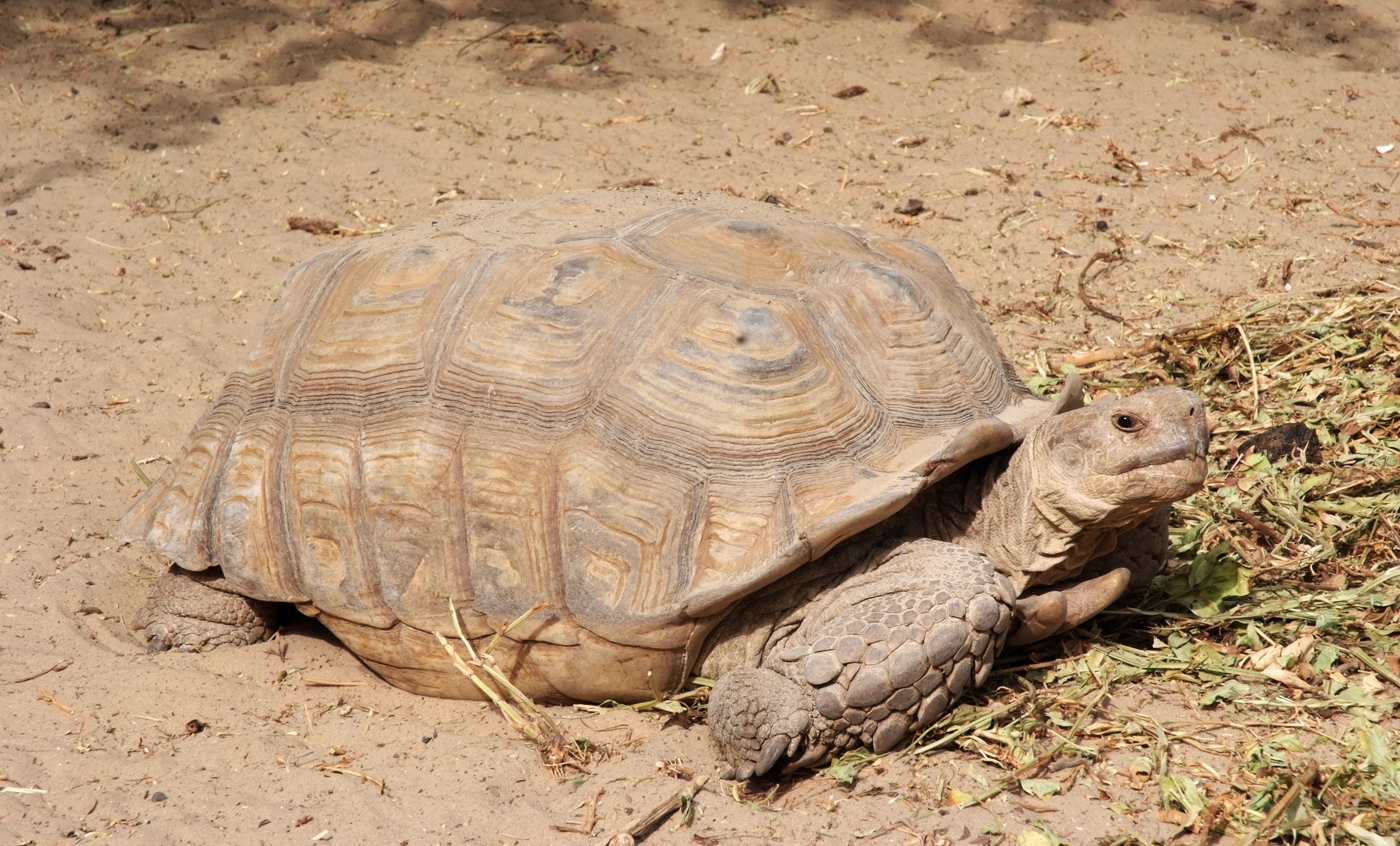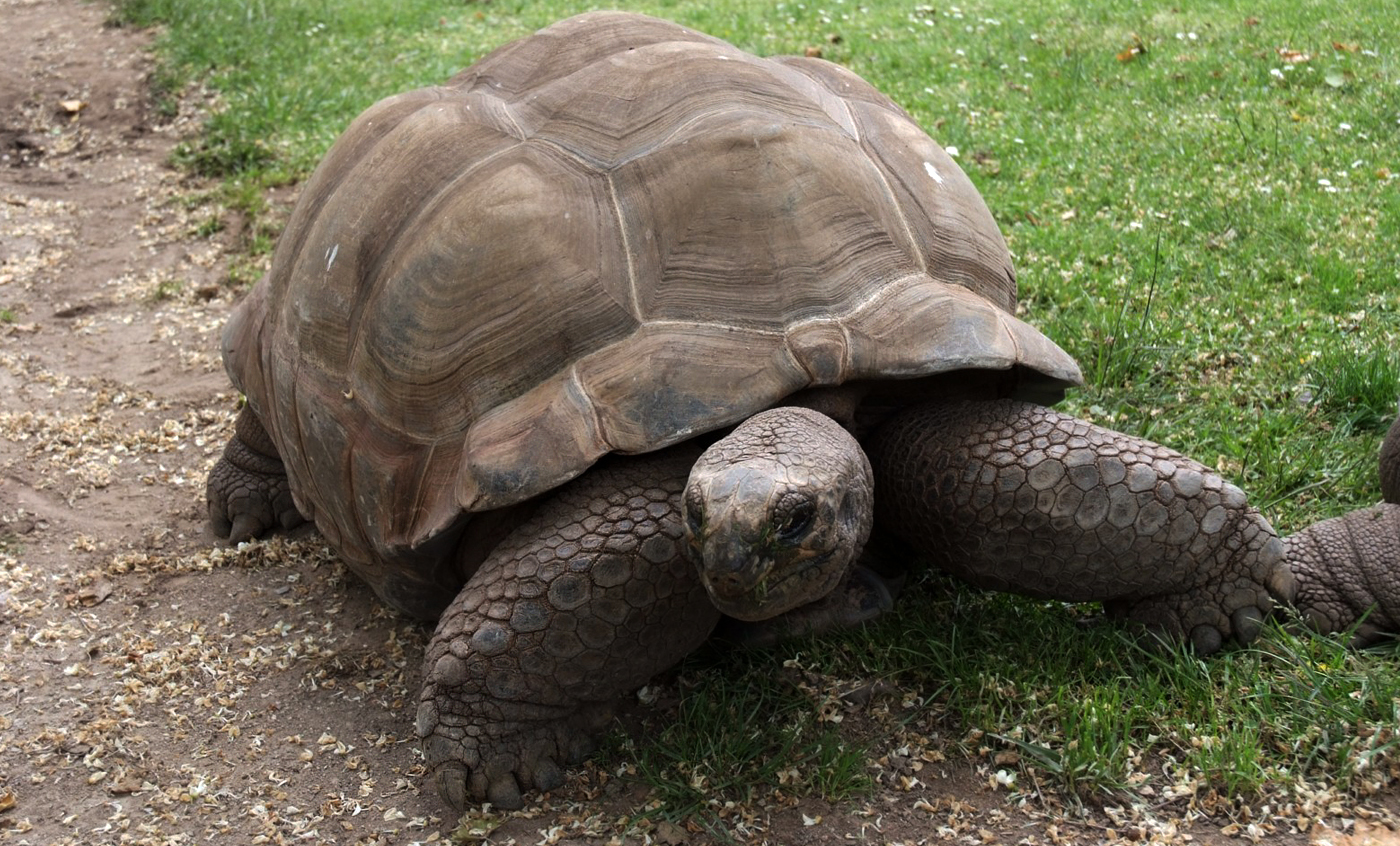Galapagos tortoise
This species spends a lot of time in the mud or half submerged in the water to regulate its body temperature and protect itself from parasites. It eats grass and leaves, although the diet varies from one island to the other.
Before the arrival of white explorers, estimates calculate that there were some 250,000 tortoises on the archipelago, but today due to overhunting and competition with introduced fauna, there are only around 15,000 remaining, unevenly distributed between different subspecies.
Breeding program
Natural habit
Galapagos Islands.
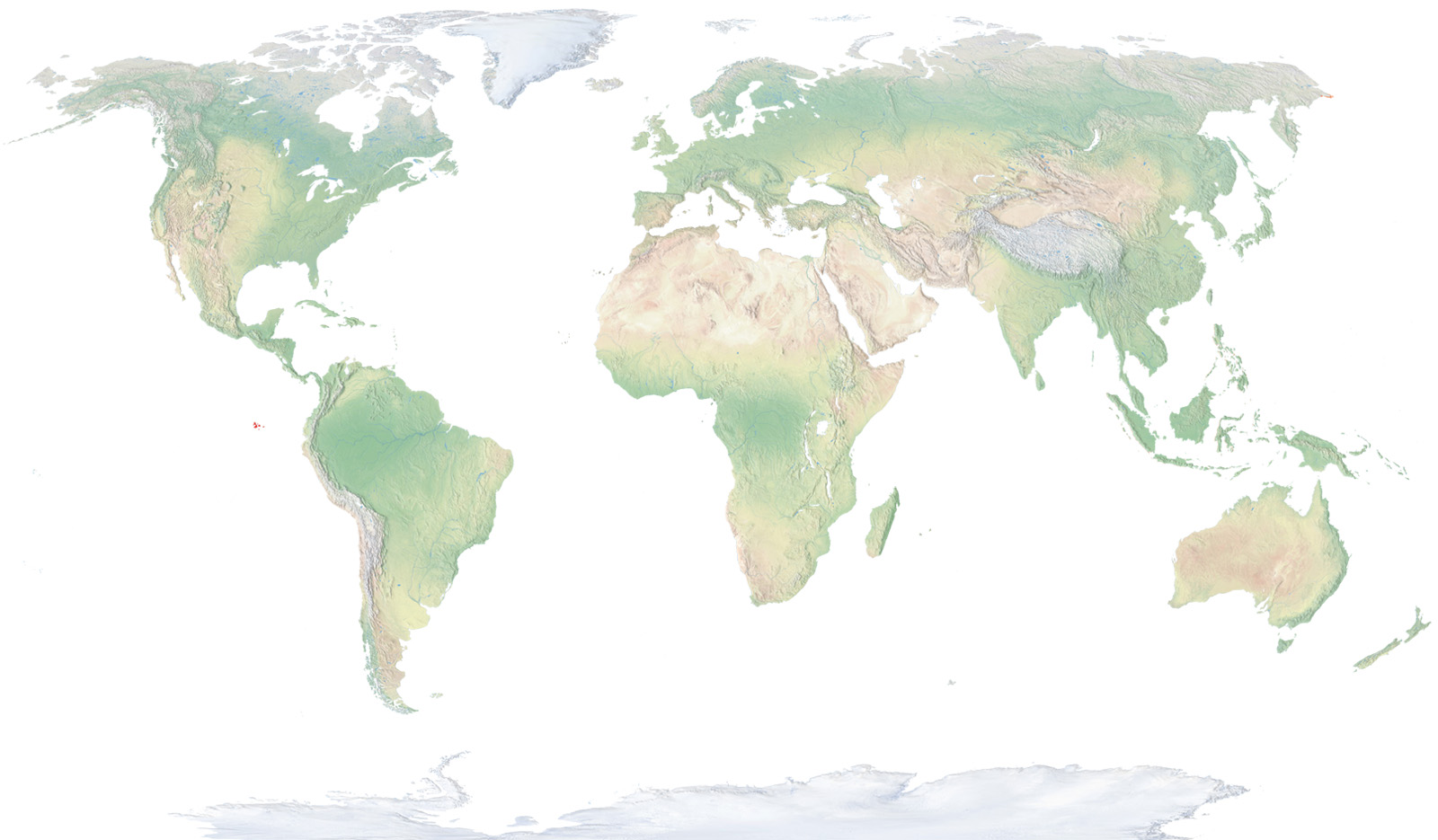
- Distribution / Resident
- Breeding
- Wintering
- Subspecies
Risk level
- Extint
- Extint in the wild
- Critically endangered
- In Danger
- Vulnerable
- Near threatened
- Minor concern
- Insufficient data
- Not evaluated
Taxonomy
Physical characteristics
Biology
Reproduction
Biology
They are the largest tortoises that exist, along with tortoises in the Seychelles group in the Indian Ocean. The largest specimens can measure up to 1.8 metres long and weigh over 300 kg.g.
Its habitat consists of the arid lava lands of the Galapagos Islands. It spends the coolest hours of the day on completely dry lava regions on the lowlands of the islands, where the ground is generally arid and covered with grass. However, during the hottest time of day, it tends to move to higher volcanic lands, wetter, where it finds pools of water and feeds on the rich plant life that grows there.
Their diets are principally herbivorous, as they feed on grasses, leaves, marram grasses and fruits of different plant species, including cacti, although they can also eat carrion and other organic remains.
Oviparous, the female lays from four to 14 eggs, which are placed in holes dug into the sand. During copulation, males bray loudly and this sound is audible at considerable distances.
During the rainy season, they spend a good part of their time in the mud or semi-submerged for heat regulation and protection against parasites. They form a very loose social structure based on a hierarchy defined basically by size. They often interact very aggressively, hitting their shells against each other and biting each other’s limbs, both in fights between males and when courting.
Their longevity is extraordinary, one of the longest in the animal kingdom. One of the most famous individuals in this species was a female named Harriet, who died in 2006 at an Australian zoo at the ripe old age of 176. She was supposedly studied by Charles Darwin himself. Another elderly male named Lonesome George, the last tortoise specimen on Pinta Island, who died in 2012 at 112 years of age.
As the environment, landscape and climate vary greatly from one island to another, and even within a single island, the morphology, size and weight of the different tortoise populations also change, to the point that up to fifteen subspecies are recognised, of which only eleven survive today. Recently, some authors believe that this subspecies is actually a different species, although this criterion is not accepted by all experts.
The impressive abundance of tortoises that the first visitors to the islands found is a thing of the past, due to overhunting, particularly during the 19th century, by sailors who took them aboard ships for fresh meat during long sea crossings, taking advantage of the animals' resistance to severe water and food shortages.
Moreover, the introduction of exotic species like rats, dogs, cats and goats to the fragile ecosystem of the Galapagos Islands has also contributed to the great decrease in their populations, and the extinction of up to three subspecies.
The Barcelona Zoo participates in the European Studbook (ESB) for this species in captivity.



